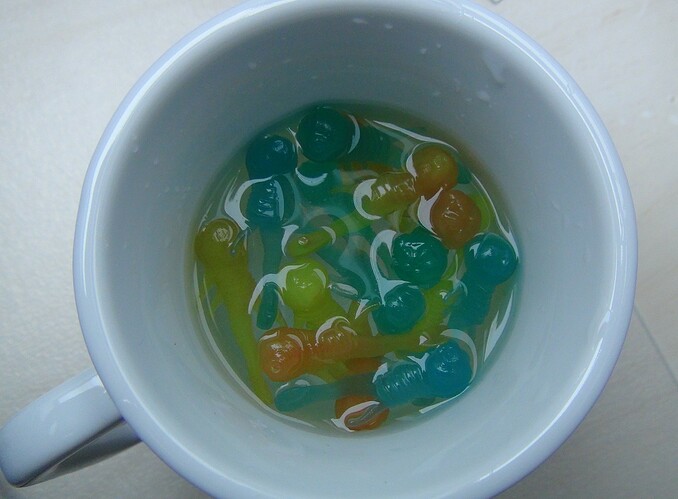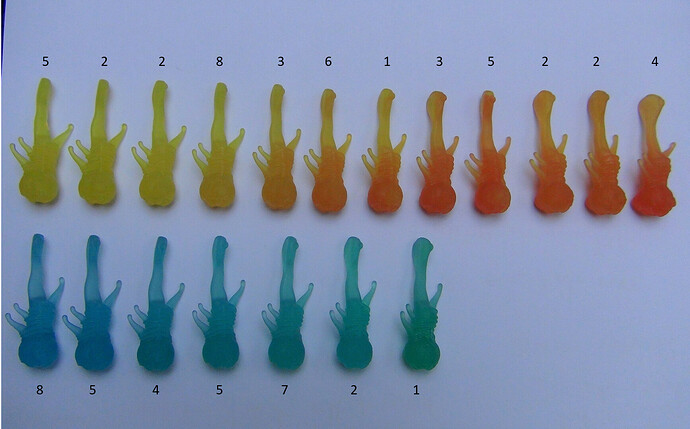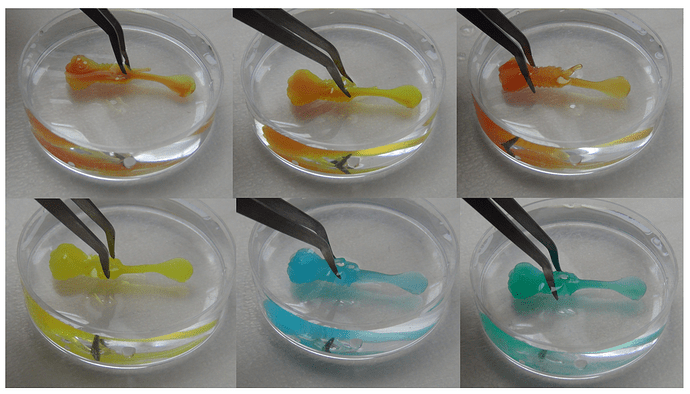Ok, time for some more rigorous methodology!
Let me get all my squids and wash them first in their native environment:
Then arrange them into a spectrum of colors (do not mind the numbers yet, I will get to them):
As you can see the first row ranges from pure lemon yellow through orange to amber. I have to agree with @TheChronicler for surmising the second color being injected is red instead of orange.
Some of the squids are more heterogenous in their color melding and you can see the streaks of red dissolved into the yellow to create this final orange/amber look. This is the same as orange/red zamor spheres from the year prior.
Squids are aquatic creatures and indeed when you submerge them in water, you can observe the colors within the squid more easily. A little bit of water in a Petri dish and…:
First two pictures show heterogenous squids with different levels of red dye injected, third one has more homogenous darker squid. Picture four shows pure yellow and fifth along with sixth dispay blue/green variants.
And now, what are those strange numbers I mentioned?
Actually…
a little bit of microscopy reveals numbers at the point of injection:
The numbers in the very first picture are the numbers for the respective squids. Make of that what you will, but I was unable to find any pattern.
So in conclusion for all intents and purposes, the yellow/orange/red squid ammo should be considered to have the exact same color scheme as the yellow/orange/red zamor spheres. Blue/green ammo is the anolog of that.



